
Pumpkins are the symbol of fall and the inspiration behind pretty much every single seasonal treat on offer during October and November. If it doesn’t have pumpkin spice in it, no one seems interested. And it’s easy to see why pumpkins are such a superstar. But you may not know that they’re also highly versatile. There are more than two dozen different types of pumpkins, and most of them you probably never knew about it. Get to know the A-list celebrities of fall a bit better.
Jumbo Pumpkins

If you’ve ever been to go pumpkin-picking, you’ve probably seen jumbo pumpkins growing in a field. These giant gourds grow to impressive proportions. There are several varieties of jumbo pumpkins, including Atlantic Giant, Big Max, Big Moon, and Prizewinner. Some of these pumpkins grow, on average, to 300 pounds. One of the largest pumpkins ever recorded weighed a positively terrifying 2,300 pounds. Huge pumpkins like this are not considered to be good eating pumpkins. While they produce the pulp and flesh that other pumpkins create, scooping out the insides of these pumpkins is incredibly time-consuming and yields a great deal of product. These large pumpkins are typically used for carving and other decorating projects.
White Pumpkins
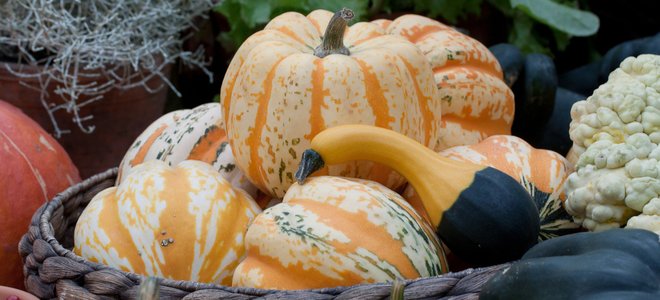
Along with orange pumpkins, white pumpkins are the most-seen of these gourds. White pumpkins make appearances in seasonal displays because they make a nice contrast with the bright orange, and they are especially good for painting and drawing. White pumpkin varieties include crystal star, lumina, and white pie. These pumpkins have sweet flesh that makes them suitable for baking and a strong outer skin that makes them good for carving. White pumpkins are good all-around pumpkins that are useful for cooking and seasonal displays.Casper and white ghost pumpkins have sweet flesh that is good for baking but tough outer skins that make them challenging to carve.
Blue-Green Pumpkins
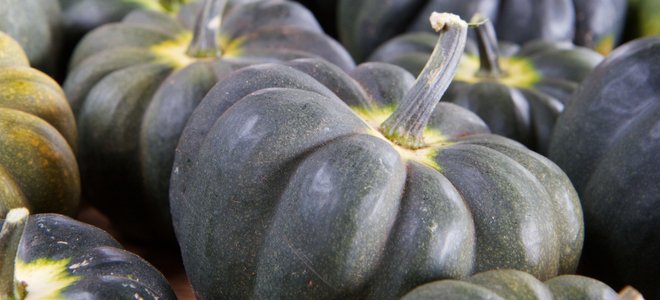
It’s so common to see bright orange pumpkins, even creamy white, that other colors of pumpkins can seem jarring. Such is the case with blue-green pumpkin varieties, which have a somewhat turquoise shade that’s very different from the standard pumpkin orange. Blue-green pumpkin varieties include blue Lakota and jarrahdale, both of which have a relatively uniform blue-greenish color. The kakai has a more mottled skin that is yellow with streaks of dark blue-green. The kabocha has bright green skin that looks more like a watermelon than a pumpkin. Crown Prince pumpkins have pale grayish skin. Both these pumpkins have very sweet flesh, which makes them popular for making pies and other pumpkin treats. The green-striped cushaw has green and white striations, and it’s not a great carving pumpkin, but it is a classic favorite for making pumpkin pie. Some recipes may even specifically call for the green striped cushaw pumpkin.
Red-Orange Pumpkins

Of course, the real stars of the season are red-orange pumpkin varieties. You may not know their names, but you know what they look like. These are the types of pumpkins you have likely seen the most often and the types you’ve probably used in your own home. Red-orange pumpkin varieties include Cinderella, pumpkins that have a nice round shape with a somewhat flat top that resembles Cinderella’s pumpkin carriage. These pumpkins are also good for cooking, thanks to the sweet, moist flesh.
Lakota and winter luxury are slightly less common red-orange pumpkins. Lakota pumpkins have a somewhat pear shape that does not resemble classic pumpkins. They also have dark green veining that makes them less popular for seasonal displays and carving. However, the sweet flesh inside makes them very popular in cooking pumpkins. Winter luxury varieties have lacy, pale orange skin that gives them a distinct look. They’re very well known among foodies because of the sweet flesh inside that cooks well.
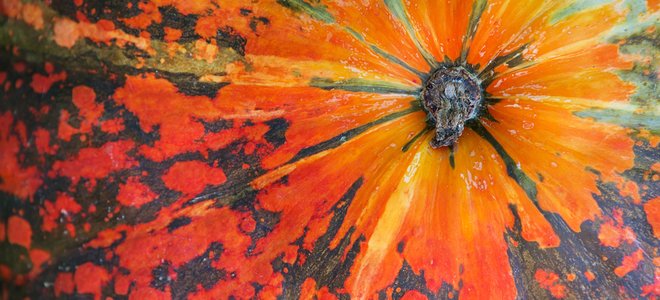
Autumn gold, blaze, and harvest moon have the bright orange color, round shape, and ribbing that creates the classic pumpkin look everyone seeks during Halloween. These varieties grow to average sizes, neither huge nor tiny, and have sweet-tasting flesh and seeds that make them good for cooking purposes. Their beauty makes them highly popular for caving and decorating, too.
Connecticut Field and Jack-o-Lantern pumpkin varieties are extremely well known and commonly grown because they grow to medium-to-large sizes with bright orange skin and a classic pumpkin shape. If you’re going pumpkin picking, you’ll likely see one or both of these varieties because they are sought-after carving pumpkins.
Mini Pumpkins
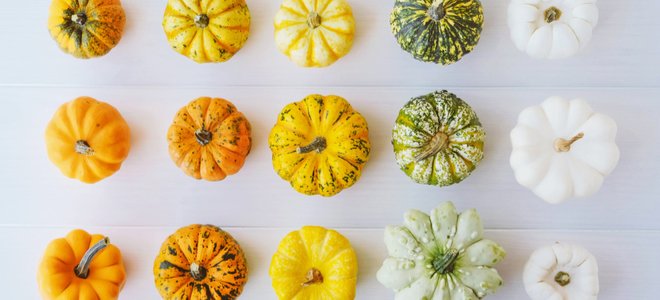
Tiny pumpkins are frankly adorable, and they make decorating for the holidays a snap. You can plop a few mini pumpkins down on a table or holiday display, and suddenly, it’s next level. Mini pumpkin varieties include baby bear, jack-be-little, munchkin, and orangita, all of which are orange in color and have a classic pumpkin shape. Baby boo mini pumpkins are white and grow to a maximum size of about three inches.
Ugly Pumpkins
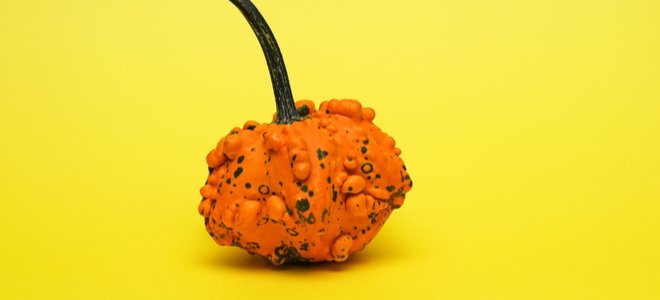
Though not an official classification of pumpkins, at least not yet, there are some varieties of pumpkins that are meant to be ugly…or at least, not quite as prissy as all those other pumpkins in the patch. Knucklehead pumpkins are bright orange and look like pumpkins, but they are covered in green growths that look unappetizing. This is the feature that makes this variety of pumpkins especially appealing for Halloween decorations. Warty Goblin pumpkins are also covered with odd-looking green growths. The tough skin of these pumpkins makes them difficult to carve, so they’re best left looking just as they are.
Cooking Pumpkins
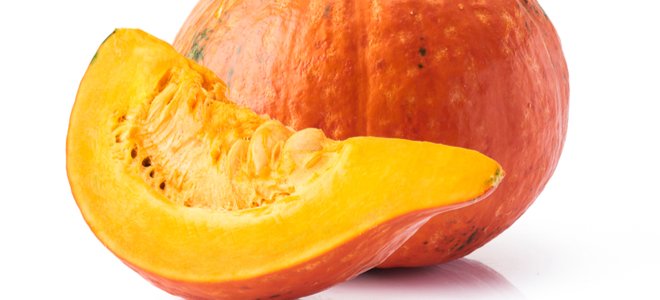
Some varieties of pumpkins are used far more often for cooking than for display because they’re so easy to grow or look so beautiful when they’re growing. One example is the blue doll, which has natural mildew resistance and deep orange flesh that is perfect for cooking in pies and soups, popular seasonal treats. Long Island Cheese pumpkins are also popular for baking pumpkin pies, but they aren’t the prettiest pumpkins you’ll ever see.Fairytale pumpkins, however, are a contender for the most beautiful list. They have a classic, perfect pumpkin shape with deep ribbing and a round, flattened shape. These pumpkins grow to medium size, just about 15 pounds, so they’re perfect for home growers. The sweet flesh inside can be used for any pumpkin recipe, so this is a popular garden pumpkin. The musquee de Provence grows in the south of France and has a traditional pumpkin shape. Extra-deep ribbing gives the pumpkin definition. This pumpkin looks lovely in any home garden and produces nice flesh that can be used in any pumpkin recipe.
Source link : https://www.doityourself.com/stry/29-pumpkin-varieties












